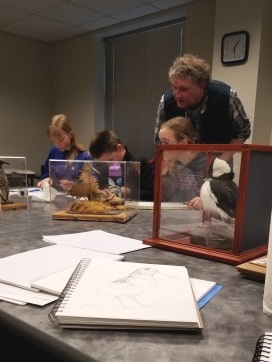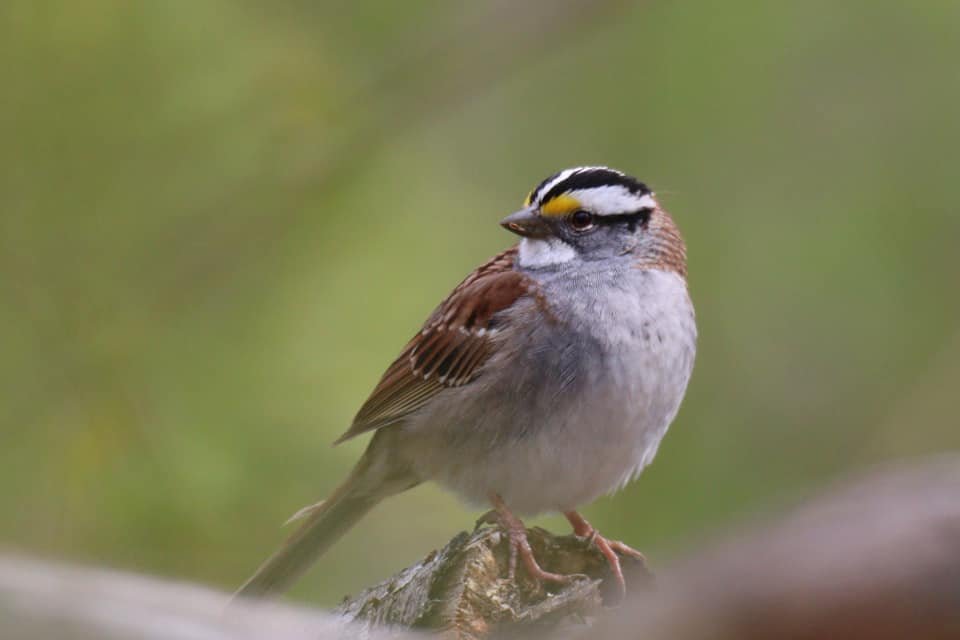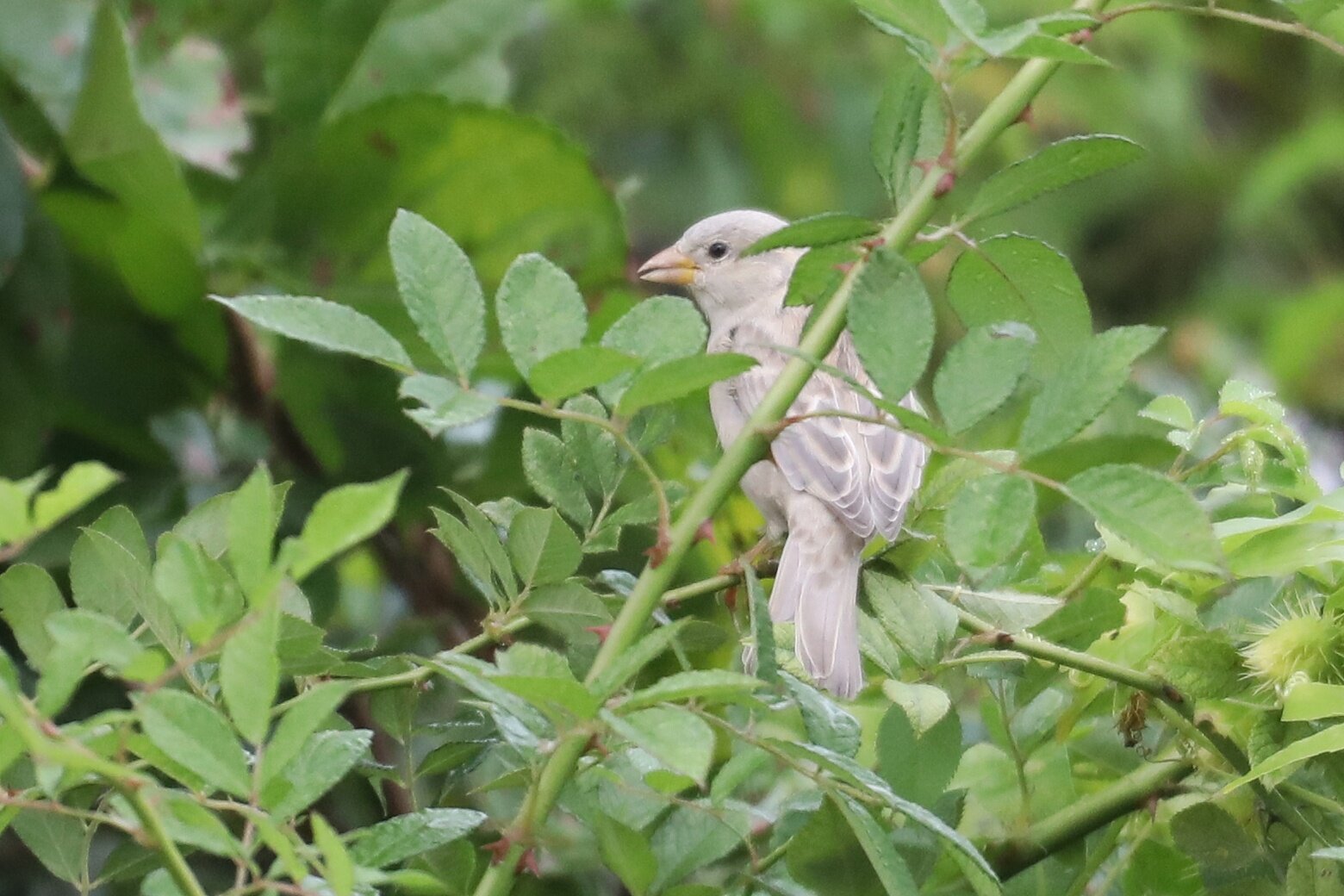by Laurie Pocher
Clear skies and calm seas were the order of the day as the Maine Young Birders cruised over to Stratton Island on Saturday. We spent a few hours with the Audubon team that lives on the island throughout the breeding season to monitor the tern and heron colonies on Stratton, Little Stratton, and Bluff Islands.
The staff was kind enough to set up some spotting scopes so we could check out the beach and nearby islands while we waited for the rest of our group to arrive. We were greeted by dozens of Common Terns chattering away and swooping down to say ‘hello’ — or maybe it was more like ‘get off my lawn!’ The presence of ‘tern sticks’ held in the air over our heads successfully prevented anxious birds from making contact with our scalps. Common Tern chicks blended in well with the rocks on the beach and could have been easily overlooked if the parents weren’t constantly bringing in fish to feed them. In addition to extremely close encounters with Common Terns, we were treated to a flyover by a single Black Tern.
When the second group arrived, we relocated to an interior pond, where we peeked through the reeds at Great Egrets, Snowy Egrets, Glossy Ibis, Gadwalls, Mallards with ducklings, Canada Geese with Goslings, and our first Spotted Sandpiper of the day. We were able to see several Great Egret nests in the trees across the pond, with juveniles waiting patiently for feeding time. Tree and Barn Swallows flew overhead while Red-Winged Blackbirds sang from the reeds.
After a quick visit to the base camp where we learned about some of the different types of fish that terns feed (or try to feed) their young, we checked out the East Coast of the island. We saw another Spotted Sandpiper, as well as several Black Guillemots, and Common Eiders with chicks. An American Oystercatcher laughed out loud as it noisily flew by, and we saw several more Tree Swallows and a couple of Yellow Warblers along the way.
We split up into pairs and spent the next 45 minutes in small blinds with views of nesting tern colonies at different locations along the island’s shoreline. Some birders were treated to views of Arctic, Least and Roseate Terns. We all got to see plenty of chicks of various ages, ranging from only a day or two old with just ‘nubbins’ where their wings should be, to several weeks old where they’re mostly able to fend for themselves but still rely on their parents for food. We also witnessed some courtship and mating, as well as a couple of terns sitting on eggs.
Other species we saw (or heard) throughout our journey to Stratton Island brought our total count to 30 for the day and included: Semipalmated Sandpiper, Short-Billed Dowitcher, Bonaparte’s Gull, Ring-Billed Gull, Herring Gull, Great Black-Backed Gull, Double-Crested Cormorant, Song Sparrow, and Chestnut-Sided Warbler. Click here to view our complete eBird checklist.
We’d like to extend a special thank you to Michael and the whole team on Stratton Island for being such great hosts, and for taking such good care of us and the birds! Click here to learn more about shorebird conservation efforts at Stratton Island.
Our next outing — the Audubon Sunset Puffin Cruise on July 22 — is already full and we’ve started a waitlist. If you’d like to add your name, please do so via this link: 2022 Sunset Puffin Cruise, New Harbor.
Click here for more information about how to join the Maine Young Birders Club.
As a nonprofit we rely on dues and donations to fund our club and make these outings possible. You can make a donation here.















































































































































































